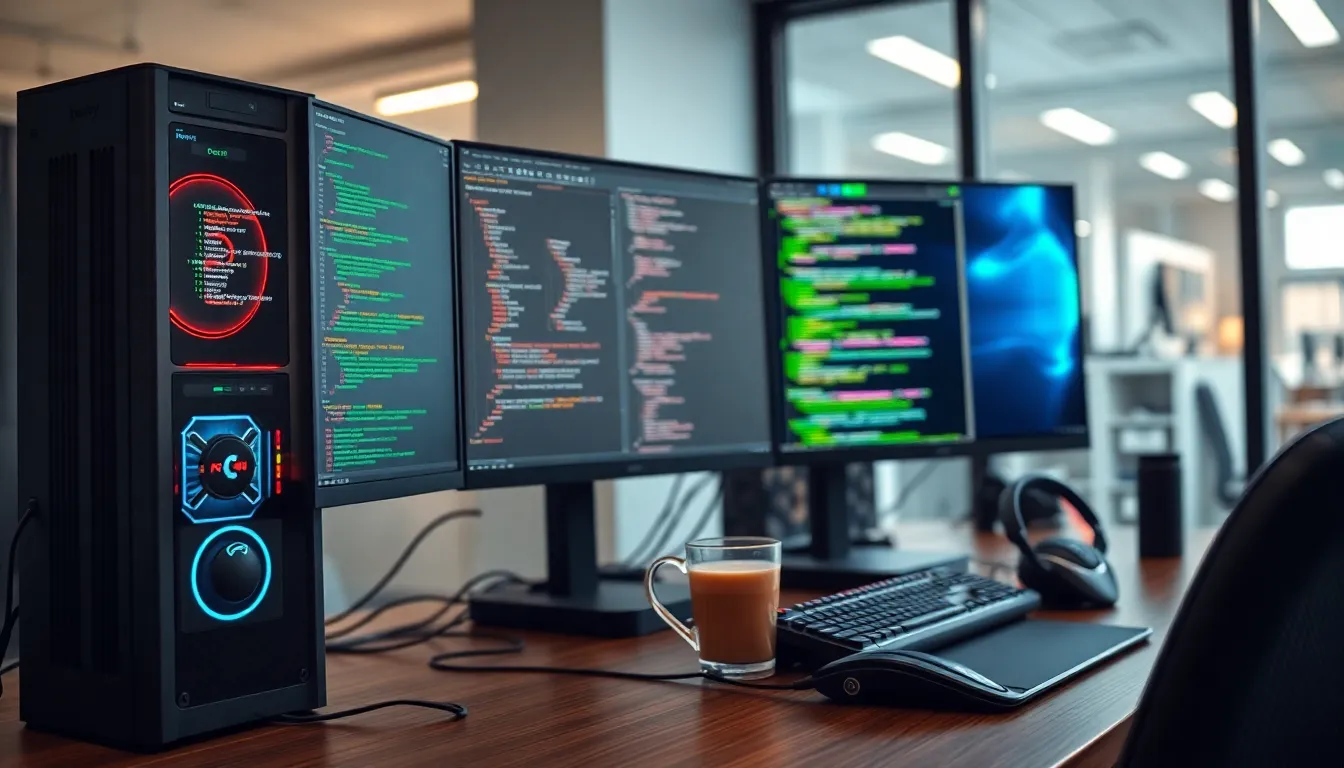In the fast-paced world of software development, few things are as frustrating as lagging performance. Enter the Python SDK 25.5a, a tool that promises to bring efficiency back into the equation. But what happens when that promise falls short? Burn lag is the sneaky villain that can turn a smooth ride into a bumpy journey, leaving developers scratching their heads and questioning their life choices.
Imagine trying to run a marathon while dragging a boulder—this is what burn lag feels like. It slows down processes and hampers productivity, making developers wish they’d stuck to simpler tasks like knitting. But fear not! Understanding and tackling burn lag in Python SDK 25.5a can transform that bumpy ride into a smooth cruise. Let’s dive into the depths of this issue and discover how to reclaim that lost speed.
Python SDK 25.5a Burn Lag
Burn lag describes the delays experienced during software development when using Python SDK 25.5a. Developers encounter this issue primarily due to inefficient resource allocation, which affects overall productivity. Identifying the root causes of burn lag plays a crucial role in addressing these performance challenges.
Several factors contribute to burn lag. Code complexity significantly affects execution speed, with convoluted logic leading to longer processing times. External library dependencies can also introduce delays, especially when libraries are outdated or incompatible. System resource limitations, such as insufficient memory or CPU power, further exacerbate the lag, making timely execution difficult.
Solutions exist to alleviate burn lag. Optimizing code through refactoring can enhance performance, improving execution time by simplifying logic and reducing complexity. Keeping libraries up to date ensures compatibility and maximizes performance benefits. Allocating adequate resources based on project demands mitigates potential delays, allowing smoother operation.
Monitoring performance is essential for reducing burn lag. Developers can use profiling tools to identify bottlenecks within the code, enabling targeted improvements. Regularly reviewing and updating development environments also helps maintain performance standards.
Understanding burn lag in the context of Python SDK 25.5a allows developers to implement strategies that mitigate its impact. Comprehending the root causes and available solutions empowers them to streamline workflow, enhancing productivity. By addressing these aspects, developers can significantly improve their programming efficiency, resulting in better project outcomes.
Common Causes of Burn Lag

Burn lag can stem from various issues during the development process. Understanding these causes helps in effectively addressing performance challenges.
Hardware Limitations
Inadequate hardware plays a pivotal role in the occurrence of burn lag. Insufficient RAM often leads to slower data processing, especially with large datasets. Meanwhile, older CPU models may struggle with complex calculations, causing extended execution times. Disk speeds also impact performance; traditional hard drives may not keep pace with demanding applications, leading to increased load times. Developers need to evaluate hardware specifications regularly and prioritize upgrades to meet project requirements.
Software Conflicts
Software conflicts contribute significantly to burn lag. Compatibility issues between Python SDK 25.5a and third-party libraries often create unexpected errors. Furthermore, multiple instances of the same library can cause versioning conflicts, leading to inefficient resource usage. These conflicts require careful management, as they can slow down execution and increase debugging time. Regular updates to development environments help minimize these risks and ensure smoother integration of necessary tools and libraries.
Identifying Burn Lag Issues
Identifying burn lag involves understanding performance bottlenecks during software development. Developers can utilize several tools and techniques to pinpoint issues effectively.
Performance Monitoring Tools
Performance monitoring tools provide insights into application behavior in real-time. Examples include New Relic, Prometheus, and Datadog, each offering comprehensive metrics. These tools help track CPU usage, memory consumption, and response times, allowing developers to detect inefficiencies. Moreover, integrating these tools early in the project assists with proactive management. Continuous monitoring helps identify trends over time, making it easier to address potential burn lag before it affects productivity.
Debugging Techniques
Effective debugging techniques play a crucial role in resolving burn lag issues. Using built-in debuggers in IDEs like PyCharm enhances code analysis. Breakpoints allow developers to examine execution flow, revealing problematic code sections. Employing logging libraries, such as Python’s built-in logging module, aids in tracking application behavior. Furthermore, unit tests can validate specific functions, ensuring reliability while refactoring code. Collectively, these techniques empower developers to address root causes of performance lag efficiently.
Solutions to Minimize Burn Lag
Minimizing burn lag involves several targeted strategies. Implementing effective solutions greatly enhances the performance of projects using Python SDK 25.5a.
Code Optimization Strategies
Optimizing code is essential in reducing burn lag. Refactoring complex code simplifies functions and can significantly boost execution speed. Regularly reviewing algorithms for efficiency ensures better resource management. Using list comprehensions instead of loops often results in faster execution for data manipulation. Reducing the size of data structures, when feasible, also contributes to performance improvements. Avoiding unnecessary global variables limits memory overhead. Prioritizing updates for third-party libraries introduces important performance enhancements and bug fixes.
Environment Configuration
Configuring the development environment correctly is crucial for minimizing burn lag. Ensuring compatibility between Python SDK 25.5a and libraries reduces the risk of conflicts. Allocating sufficient system resources based on project requirements prevents bottlenecks. Upgrading hardware components, such as RAM and SSDs, results in noticeable improvements in performance. Employing virtual environments isolates dependencies, leading to more stable configurations. Monitoring system performance metrics helps in identifying areas requiring adjustments. Using tools like Docker for consistent environment setups aids in achieving effective project execution.
optimizing software development
Addressing burn lag in Python SDK 25.5a is essential for optimizing software development. By understanding the root causes and implementing targeted solutions, developers can significantly enhance their productivity. Regularly updating libraries and refining code can lead to smoother performance and fewer delays.
Utilizing performance monitoring tools and effective debugging techniques empowers developers to identify and resolve issues proactively. With the right strategies in place, teams can navigate the challenges of burn lag and achieve better project outcomes. Prioritizing hardware upgrades and environment configurations also plays a vital role in maintaining efficiency. Embracing these practices ensures a more streamlined development process and fosters a more productive work environment.
